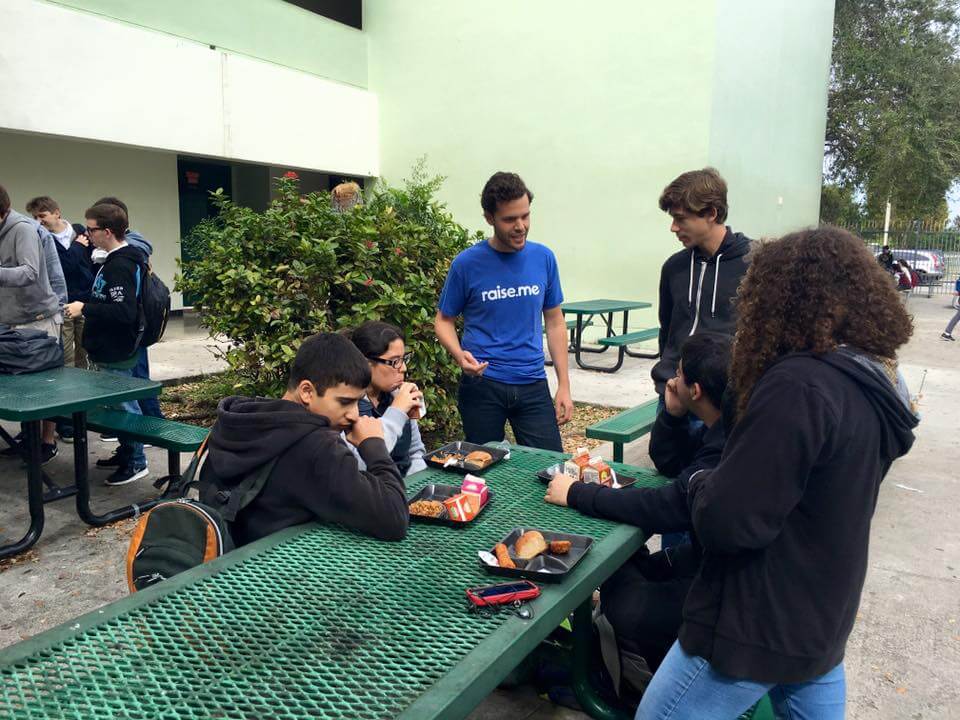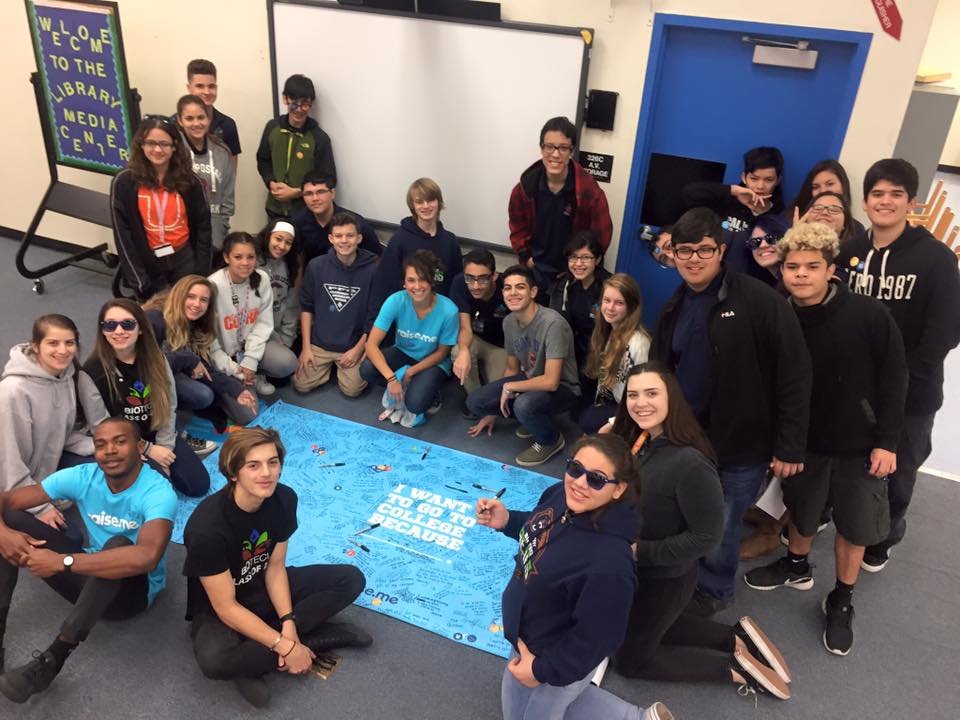As the second oldest child in seven children, Charline Laurore’s biggest obstacle on her path to college was money. Her parents had already taken a loan to support her older brother’s college education but Charline did not want to increase their financial burden. Then, as a student at North Miami Senior High, her friend told her about RaiseMe.
The RaiseMe interface for users to learn about universities and understand the scholarships on offer (Photos via RaiseMe)
RaiseMe, a website and mobile app, allowed Charline to freely discover and compare colleges, publish her achievements, and explore the scholarships some colleges were willing to award her for ‘each core class, activity, or dual enrollment’ she picked up in high school. Through RaiseMe, she was also able to compare college requirements and acceptance rates. “Every night that I stayed up doing homework…I wanted to give up but…I could not because I have a goal…to reach,” she said when she was interviewed as a part of RaiseMe’s #StudentSpotlight series. Charline earned $27,653 towards college tuition and she now attends Barry University in Miami, Florida. She wants to become a paediatrician.
While at first, it seems like there is an asterisk hiding somewhere, the success stories of participating students and the possibility of an accessible, affordable college education is too good to ignore. RaiseMe’s 1 million+ users have a profile on the platform where they can add their achievements and earn micro-scholarships on an incremental basis throughout the four years of high school.
By connecting them to 275+ colleges that will pay them for getting good grades, volunteering in the community, or performing leadership roles, RaiseMe claims to raise an average of $22,500 in micro-scholarships per student. It has also hosted exemplary students like Abby Saxastar, who raised $80,000 to cover her tuition at Stetson University, a private college in central Florida. However, accruing micro-scholarships doesn’t transfer the money to students’ bank accounts. Students receive the micro-scholarship funds directly from colleges once they apply, are admitted, and commit to attending an institution.

RaiseMe’s Founder and CEO, Preston Silverman (center) (Photo: RaiseMe’s Facebook Page)
This first-of-its kind micro-scholarship social enterprise was started by Preston Silverman six years ago to address the chasm many low-income and first-generation college students experience. Even though RaiseMe is a mission-driven organisation with a focus on expanding access to higher education, the biggest question for Silverman was in determining where their salaries would come from.
While scholarships and grants are given out by colleges, corporates, and the government, Silverman decided that the revenue model would entail charging higher education institutions a fee. RaiseMe earns by charging colleges $4000 to $20,000 annually for their services, and colleges, on the other hand, have their own metric and criteria to decide the micro-scholarship amount on offer per class or activity.
In 2012, RaiseMe was incubated at Imagine K12, a startup accelerator at Y Combinator, where they were granted $12,000 to launch their business. After months of operating frugally, RaiseMe won a $100,000 grant by the Bill and Melinda Gates Foundation which helped them hire employees and work on getting traction on the product. Today, six years later, RaiseMe has 52 employees and last year, it raised $16.5 million dollars through venture capital firms such as Redpoint Ventures and GSV Acceleration.
Silverman started RaiseMe to ensure that more students benefit from the billions of dollars of grants the government and colleges give out every year. In fact, an analysis by NerdWallet found that students missed out on $2.3 billion in free federal grant in 2017 because they didn’t complete or submit the Free Application for Federal Student Aid (FAFSA) application.
Students either learn the nitty-gritties of financial aid after being granted admission or simply don’t apply due to the opaque nature of information. Recently, a study by the Institute for Higher Education Policy, a nonprofit focused on equity in higher education, found that even a student from a family earning more than $100,000 a year could only afford 41% of colleges and those from poorer financial background couldn’t afford more than 90% of the colleges. While the financial barriers to entry stop millions from going to college, another issue troubling educators is what college admissions stand for.

A RaiseMe information seminar in a school (Photo via RaiseMe’s Facebook page)
Colleges are powerfully positioned to judge students on their individual achievement. Each year, it’s an application glazed with essays and recommendations that decides whether a student gets the coveted rite to passage and if s/he will receive financial aid. The researchers at Harvard’s Making Care Common project believe that it is equally important to assess ethical engagement in terms of contribution to one’s family, sustained community service, and experiences with diversity.
Silverman took a note of this, perhaps learning from his own volunteer work at a school in India, because RaiseMe has partnered with colleges that reward achievements that include volunteering, community work, taking up a part-time job to support one’s family and also for completing a financial literacy curriculum and filling out the FAFSA form.
Globally, learning technology investments have topped $9.5 billion with US companies accounting to over 58% of the funding. But as the Edtech space has been dominated by MOOCs, some have questioned the future of micro-scholarships in this space. Silverman, in a recent interview, spoke about receiving a lot of ‘pushback on the idea’ as there was an assumption ‘that colleges won’t be around in some years’. Educators have also raised alarm about students concentrating more on classes or activities that they get scholarship money for instead of focussing on learning.
However, student experiences are a credible testimony of RaiseMe’s success as one student, Emily Ruebelmann, who earned $34,202 in scholarships towards her tuition at the University of Dayton said: ‘RaiseMe helped take the cost out of deciding what college to go to. I was able to focus on what environment would be best for me instead of which option was the most realistic financially for me.’
Perhaps the startup’s impact can be measured by the fact that it has helped award scholarships and grants of over $1.5 billion to high school students last year. RaiseMe – by addressing information asymmetry, the glaring gaps in access to higher education in the United States, and by actualizing financial aid – is, after all, opening college doors for those who need it the most.
Subscribe to our newsletter



